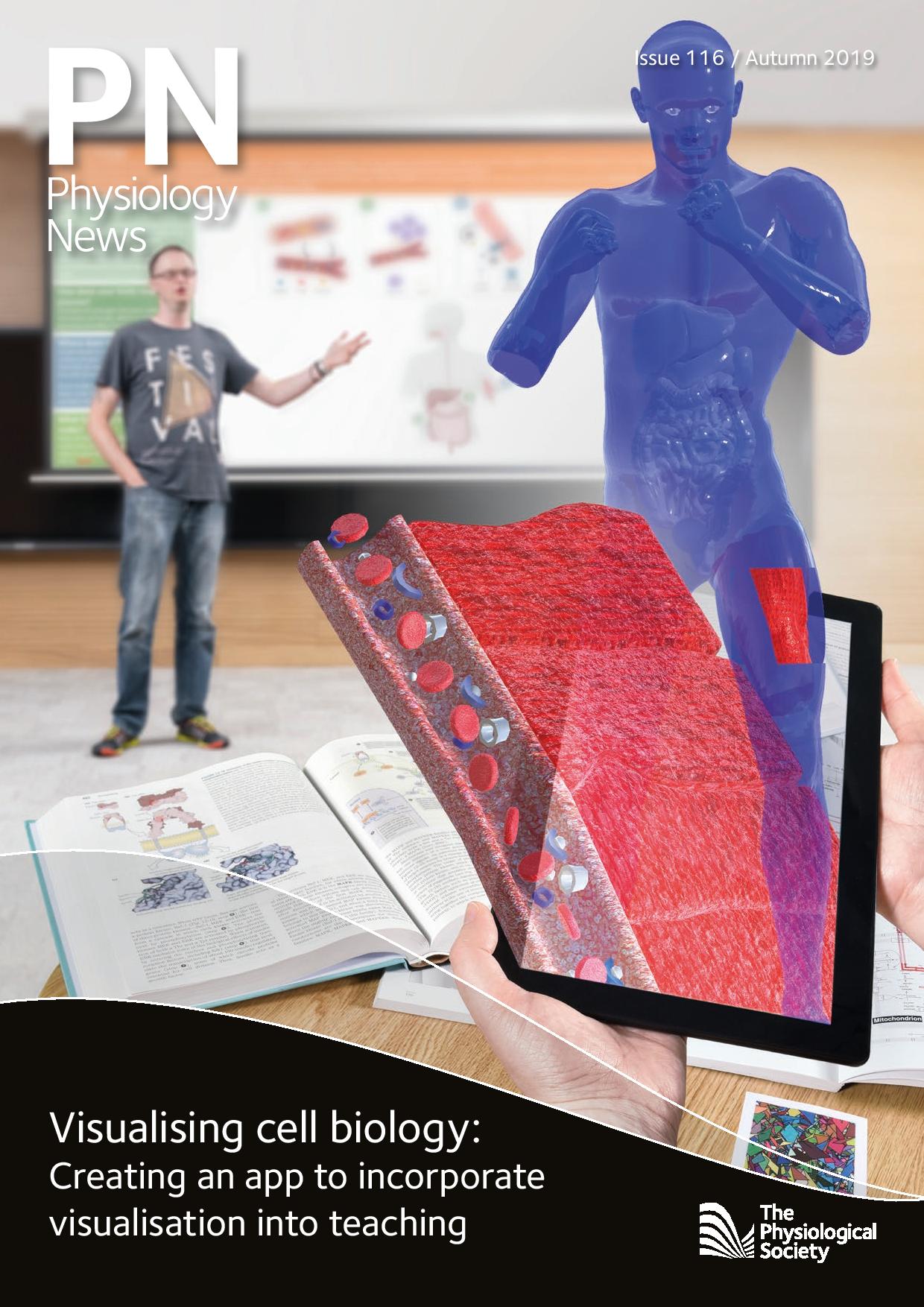
Physiology News Magazine
President’s View: The impact of Sport and Exercise Science
News and Views
President’s View: The impact of Sport and Exercise Science
News and Views
Bridget Lumb, President, The Physiological Society
https://doi.org/10.36866/pn.116.6
Those of you who were in Aberdeen in July would surely agree that Physiology 2019 was a fantastic showcase for the quality and breadth of physiology being undertaken by the membership and its colleagues. I was asked in an interview to identify my highlight of the meeting. For me it was not a single lecture or event, rather the opportunities to network and the enthusiasm that was evident in the “buzz” throughout the meeting. Plenary and keynote lectures covered diverse aspects of physiology. It was a pleasure to welcome Kevin Fong OBE, to give The Paton Prize Lecture on “Life, death and the limits of the human body”. We were extremely fortunate to have the opportunity to build on this relationship and work alongside Kevin as part of the programme for Extreme Physiology, which was hosted in Portsmouth in September this year.
Physiology 2019 presented The Society with the opportunity to discuss its recent publication Sport & Exercise Science Education: Impact on the UK Economy, which was a joint project with GuildHE, the UK’s registered body for smaller and specialist universities and colleges. The report, and the case studies it contained, acted as a springboard to discuss successful grant applications and how to demonstrate real-world impact with representatives from BBSRC and the Wellcome Trust. As an example of the all-encompassing nature of the report, the session included a presentation from Abertay University about how the impact of their research was enhanced by working closely with communities in Dundee, which is home to some of the most deprived communities in Scotland and the UK as a whole.
In May, it was an enormous pleasure to welcome over 100 attendees to the launch of the report in Parliament. Those in attendance included Members of Parliament, their staff and representatives from universities and colleges. We were also enormously grateful to Gordon Marsden MP, Shadow Minister for Higher and Further Education, for hosting us in Parliament. The findings from the report are clear; as well as being academically rigorous, Sport and Exercise Science (SES) courses provide enormous contributions to the UK economy – to the tune of almost £4 billion every year, supporting almost 150,000 jobs. As The Physiological Society’s membership continues to grow and expand, Sport and Exercise scientists will play an important role as we seek to reflect the impact of their physiological research.
In addition, it is important to reflect on the benefits of SES for those that study and research in the field. Every £1 that a student invests in their SES education yields £5.50 in higher future wages and SES graduates will earn on average £667,000 more across their working lives compared to those that do not attend university. This is a significant boost and demonstrates that employers value the skills that SES graduates leave university with, whether they decide to stay in research or enter the job market.
Our continued improved scientific understanding of how the body works is on display every time an athlete pushes themselves that little bit further, or runs that little bit faster. However, the report also makes quite clear that the impact of this research extends far beyond elite athletes. Obesity, diabetes, cancer, depression are all areas that are just as applicable to the general population and are areas in which SES research is playing a pivotal role in improving health for everyone. Our report also estimates that SES students from the 2016/17 academic year alone will save the taxpayer £267 million in costs associated with poorer health, crime and unemployment benefits. Thus, the value of SES education goes well beyond the value to the individual. As The Physiological Society, we must do more to share these insights within our universities and with the public as a whole. With this in mind, I would encourage you to read the excellent case studies (as well as Chris Gaffney’s contribution in our Spring 2018 edition of Physiology News, “The genesis of a new Sports and Exercise Science degree”) that have been provided by colleagues from up and down the country at different stages in their careers and share them as widely as possible! For more case studies, read on and also please read the full report, which can be downloaded here.
